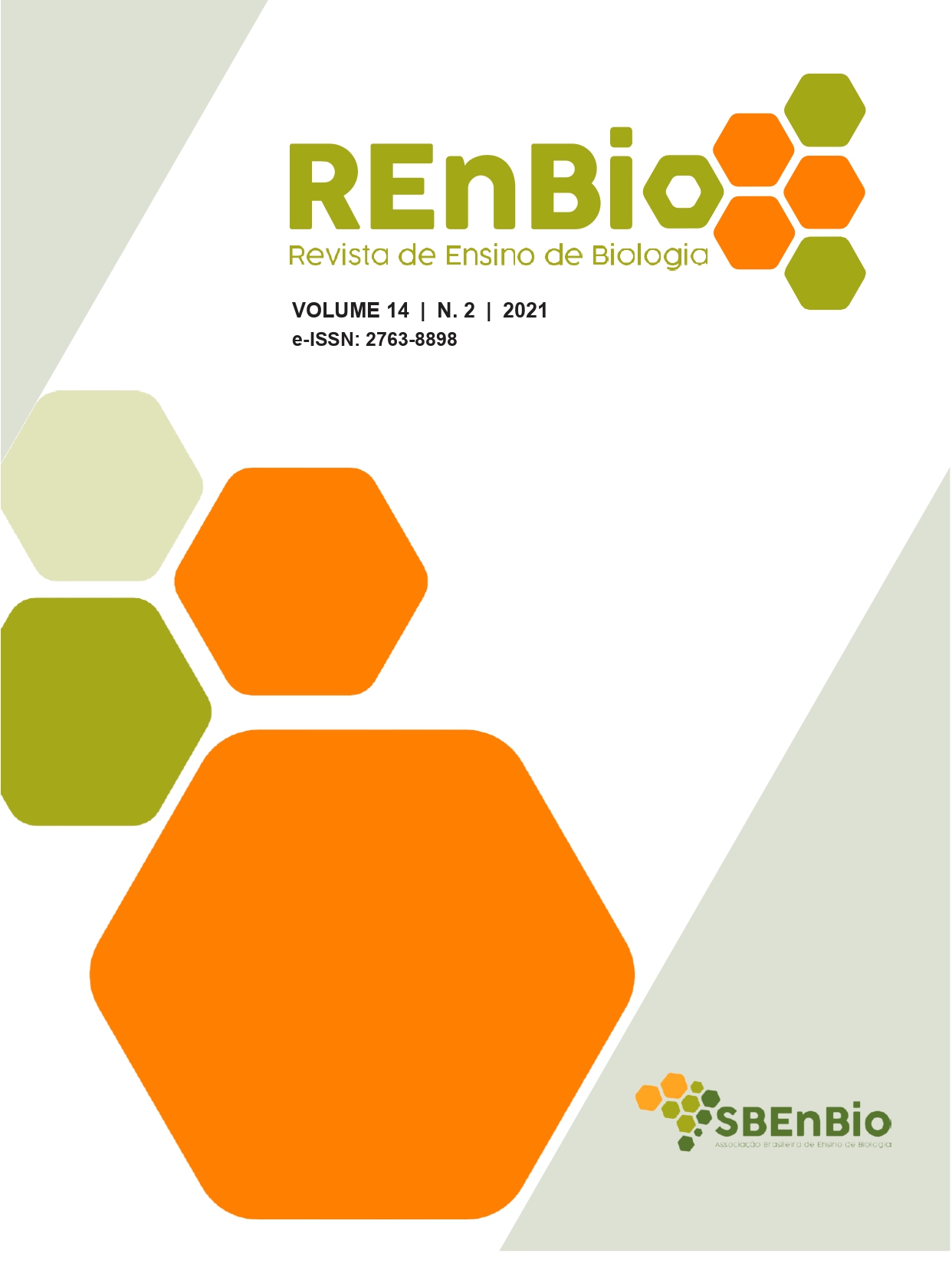Imaginary beings interweaving art with the teaching of literature and biology
Main Article Content
Abstract
This text discusses aspects of interdisciplinarity in the Basic Education curriculum, based on an experience that brought together curricular content of Portuguese Language and Biology in High School. The activity involved the artistic production of watercolors and descriptive texts of imaginary biological beings on our planet. It involved 100 students/year from a Brazilian public school, over three consecutive years (pre-pandemic COVID-19). The work resulted in the elaboration of pedagogical material, Revista dos Seres Imaginarios. The final evaluation showed a better approach of the theme, greater understanding of the contents and engagement in activities, provided the intertwining between artistic, literary and scientific languages and a socio-historical understanding of the processes of classification and biological evolution.
Downloads
Article Details

This work is licensed under a Creative Commons Attribution-NonCommercial-NoDerivatives 4.0 International License.
Aviso de Direito Autoral Creative Commons
 https://creativecommons.org/licenses/by-nc-nd/4.0/
https://creativecommons.org/licenses/by-nc-nd/4.0/
Autores que publicam nesta revista concordam com os seguintes termos:
- Autores mantém os direitos autorais e concedem à revista o direito de primeira publicação, com o trabalho simultaneamente licenciado sob a Licença Creative Commons Attribution que permite o compartilhamento do trabalho com reconhecimento da autoria e publicação inicial nesta revista.
- Autores têm autorização para assumir contratos adicionais separadamente, para distribuição não-exclusiva da versão do trabalho publicada nesta revista (ex.: publicar em repositório institucional ou como capítulo de livro), com reconhecimento de autoria e publicação inicial nesta revista.
- Autores têm permissão e são estimulados a publicar e distribuir seu trabalho online (ex.: em repositórios institucionais ou na sua página pessoal) a qualquer ponto antes ou durante o processo editorial, já que isso pode gerar alterações produtivas, bem como aumentar o impacto e a citação do trabalho publicado (Veja O Efeito do Acesso Livre).
References
AIRA, C. Um acontecimento na vida do pintor-viajante. Rio de Janeiro, RJ: Nova Fronteira, 2006.
AMBRIZZI, M. L. O olhar distante e o próximo: a produção dos artistas-viajantes. 19&20, v.6, n.1, 2011.
BORGES, J. L. O livro dos seres imaginários. São Paulo: Companhia das Letras, 2007.
BRASIL. Ministério da Educação. Base Nacional Curricular Comum. Secretaria da Educação Fundamental. Brasília, 2018.
Disponível em: http://basenacionalcomum.mec.gov.br/images/BNCC_EI_EF_110518_ versaofinal_site.pdf. Acesso em ago. 2019.
BRASIL. Secretaria de Ensino Médio e Tecnológico. Parâmetros Curriculares Nacionais: ensino médio. Brasília, DF: Secretaria de Ensino Médio e Tecnológico, 1999.
FAZENDA, I. C. A. Interdisciplinaridade: pensar, pesquisar e intervir. São Paulo: Cortez, 2014.
FONTCUBERTA, J. Fauna Secreta. Piseagrama, n. 8, 2015.
HERNÁNDEZ, F. Transgressão e mudança na educação: os projetos de trabalho. Trad.: Jussara Haubert Rodrigues. Porto Alegre: ArtMed, 1998.
LIBÂNEO, J. C. Adeus professor, adeus professora? Novas exigências educacionais e profissão docente. 5. ed. São Paulo: Cortez, 2001
LOPES, A. C.; MACEDO, E. Apresentação. In: LOPES, A. C.; MACEDO, E. (Org.) - Disciplinas e integração curricular: história e políticas. Rio de Janeiro, RJ: DP&A, 2002.
_____. Parâmetros Curriculares para o Ensino Médio: Quando a integração perde o seu potencial crítico. In: LOPES, Alice Casimiro; MACEDO, Elizabeth. (Org.) Disciplinas e integração curricular: história e políticas. Rio de Janeiro, RJ: DP&A, 2002.
ROWLING, J. K. Animais fantásticos & onde habitam. Rio de Janeiro, Rj: Rocco, 2001.
SANTOMÉ, J. T. Globalização e interdisciplinaridade: currículo integrado. Porto Alegre: Artes Médicas, 1998.
THIOLLENT, M. Método da pesquisa-ação. São Paulo: Cortez, 2011.
TUTUI, M. P. Aquarelas do Brasil: a importância dos registros pictóricos de Debret. Revista do Iphan, n.1, 2015.
